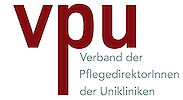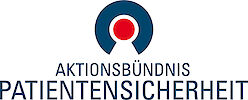Forschung
Forschung
Im Bereich der Forschung erhalten Sie zum einen eine Übersicht über die einzelnen Arbeitsgruppen.
Zu den Arbeitsgruppen
The hemostasis system is a complex structure representing an interface between blood, vasculature, and the immune system. Hemostatic disorders are characterized by diminished or excessive activities of the hemostatic system, resulting in bleeding or thrombosis. Our research is driven by the idea that understanding the level of a patient´s hemostasis activity is the primary basis for developing new treatment strategies. To develop assays for active coagulation factors we have used aptamers that were selected and characterized in collaboration with the group of Prof. Günter Mayer at the LIMES Institute in Bonn. These newly developed assays have allowed us to profile in detail the activity of the protein C pathway, one of the major anticoagulant pathways, in a variety of diseases. Other lines of research pursued within our group include the assessment of thrombotic risk under antithrombotic treatment, the development of novel methods of coagulation diagnostics, and the characterization and preparation of blood and immune cells.
Our lab is focused on the participation of non-immune cells in innate immune sensing, both via activation of cell-intrinsic receptors and through crosstalk with professional immune cells. We would like to elucidate how non-myeloid somatic cells participate in the immune sensory system, both via direct innate immune sensing and in their capacity to influence traditional innate immune cells within the host. In another area of research, we are currently investigating the cell-intrinsic innate immune sensing in induced pluripotent stem-cell derived (iPSC) neurons. Our focus is on nucleic acid recognition in CNS-resident cells and its role in host defense.
The role of vitamin K beyond coagulation
Vitamin K is essential to drive a post-translational modification, called γ-carboxylation, of 15 different vitamin K dependent proteins including several clotting factors but also non-haemostatic proteins such as GRP, MGP, Osteocalcin, PRGP1 and 2, TMG3 and 4 and Gas6. These vitamin K dependent non-haemostatic proteins have function in calcification, cell-signalling and other not yet identified pathways.
Our Emmy Noether research group study the function of the vitamin K cycle beyond blood coagulation and the interplay of the enzymes VKORC1, VKORC1-like1, and GGCX with vitamin K dependent proteins in cellular and mice models under heathy and disease conditions.
In about 20-30% of patients with severe Haemophilia A (HA), treatment with replacement FVIII is complicated due to the development of inhibitory antibodies against the substituted concentrates. The mutation type and position in the protein plays a pivotal role in the risk of inhibitor development. It is believed that F8 nonsense null mutations provoke higher immunogenicity against replacement FVIII by lacking self-FVIII protein that could be presented to the immune system. However, surprisingly, non- sense mutations located in the light chain (A3C1C2 domains; last 1/3 of the protein), have higher risk to develop inhibitors when compared to nonsense mutations located in the heavy chain (A1A2B do- mains; first 2/3 part of protein). Accordingly, the highest inhibitor risk (70 %) appears, for two pre-terminal stop codons (PTCs) located in the A3 domain. This is against expectation as the protein should be largely available to get presented and recognized as self-protein. Molecular mechanism to explain this phenomenon is still lacking, however it was suggested that a rapid degradation due to the stop mutation could be responsible. To study the most native fate of FVIII mRNA and protein our group is generating induced pluripotent stem cells (iPSCs) from HA-patients.
Differentiation of IPS cells into vascular endothelial cells offers us a patient-specific cellular model to study intracellular fate of F8 mRNA and protein. Preliminary data of IPS differentiated vECs from HA-patients with different null mutations confirmed the existence of intracellular FVIII protein even if truncated. Therefor our major aim in our ongoing research is to identify the exact trafficking route of such truncated proteins (secretory or degradative pathway) and to find out if peptides from endogenous FVIII variants are presented by MHC-I and MHC-II on the surface of vascular endothelial cells. If so, we expect mutation-specific changes in the collection of MHC-presented peptides, that might have an effect on the inhibitor development associated with the specific mutation of a patient.
FVIII-Epitope Mapping (Lumitope)
Approximately 30% of patients with hemophilia A develop inhibitory antibodies to coagulation factor VIII. Antibody formation is both the most serious and the most expensive complication of hemophilia. At our institute, these antibodies are readily detected using the Bethesda assay and an ELISA, so that a determination can be made as to whether the patient is positive and what the titer is. In the Lumitope project, the aim is to determine the antibody specificity, i.e. against which exact part (epitopes) of FVIII an antibody is directed. This provides information about the frequency of different antibodies against specific epitopes, as well as the possibility of developing a therapy.
Platelet disorders
Platelet biogenesis is a complex process that relies on the expression and functionality of a number of genes. To date, many different genes have been described to play a role in the synthesis and maturation of megacryocytes into functional platelets. Nevertheless, the cause of the disruption of functionality or the reduction in the number of platelets in half of all congenital cases with thrombocytopenia (reduction in the number of platelets) or thrombocytopathy (disruption of platelet functionality) cannot be elucidated. After the generation of induced pluripotent stem cells (iPS) from the blood of patients with thrombocytopenia, they are differentiated into megakaryocytes to study platelet biogenesis.
We are always on the lookout for potential PhD students and Masters Students intending to do their Master’s thesis. Enquiry regarding current available positions can be sent to Dr. Behnaz Pezeshkpoor: Enable JavaScript to view protected content.
The group has the focus on factor VIII: from basic biology to therapies. Factor VIII is an essential coagulation factor whose deficiency leads to hemophilia A. This factor is part of the tenase complex that lead to the activation of factor X and thus to a normal clot formation. The symptoms in hemophilia A patients are treated by introducing the missing factor VIII (or a functional alternative) to the blood circulation. Although this is an effective strategy but it will not provide a therapy. Recently gene therapy using AAV vectors became realistic approach to treat hemophilia A patients, however some complications would prohibit good amount of patients from benefiting from such long term therapeutical benefit. Thus, we are interested in investigating alternative approach based on cellular therapies; toward this direction we are following basic investigations on the synthesis of factor VIII in native cells in the human body.
Arijit Biswas Lab
Our vision lies in generating improved therapeutics for persons with thrombotic and bleeding complications (such as unexplained bleeding, rare bleeding deficiencies and acquired bleeding/thrombosis). In order to cater to this long-term vision, our mission is to dissect genetically, functionally and structurally the components involved in the very unique coagulation cascade. Citing Coagulation Factor XIII (FXIII) as a present example; efforts put by us in a past decade and ongoing research, investigations are leading us close to our vision towards utilizing FXIII and its properties to ratify its importance as a potential therapeutic for mild bleeders and as a drug-candidate for thrombotic scenarios. One of the focuses of our group is to establish the functional impact of structural-genetic variants of coagulation factor coding genes and how this can be utilized as a tool to generate improved therapies in a clinical setting.
Our main coagulation component of interest is FXIII, which is a plasma circulating pro-transglutaminase complex responsible for covalent crosslinking of the pre-formed soluble fibrin clot converting it to a mechanically stronger one that is resistant to fibrinolysis. Inherited deficiency of FXIII is a rare coagulation disorder which results in severe bleeding diathesis. The severe deficiency is caused by homozygous or compound heterozygous mutations in FXIII genes (F13A1, F13B). Investigations from our group have suggested the existence of a mild form of FXIII deficiency as well, resulting exclusively from heterozygous genetic variants. Dr. Anne Thomas, a previous PhD from this group proved the causality of these variants by expressing them in a heterologous system. This seeded the idea of exploring their functional status by isolating these heterozygotes in pure state; which is an ongoing PhD project (Mr. Haroon Javed). Furthermore, using a clustered approach involving in silico modelling complemented by biochemical analyses, our group has shed light on the activation mode, behavior, and regulation of this complex (FXIII-A2B2), as well as involved proteins (FXIII-A and FXIII-B) (Dr. Sneha Singh). Utilization of hybrid methodologies for structural characterization of these proteins has been the core strength of our group, which guided us towards the first all-atomic structural model of this plasma complex (Dr. Sneha Singh).
Working with coagulation proteins, to assemble their structure is challenging given that many of the complexes are short-lived, transient, existing as a huge supra-molecular complex or with a troublesome maturation in plasma. In order to resolve this problem, we have been collaborating closely with structural biology groups in Europe in order to access their state-of-the-art biophysics and bioanalytical facilities. Very recently, to gather an improved insight into FXIII complex, we (Dr. Sneha Singh) have been utilizing the services and facilities at the Thermo-Fischer cryo-EM facility, Netherlands (Dr. Deniz Urgular) and the Institute of structural biology, Bonn (Prof. Matthias Geyer, PD. Dr. Gregor Hagelükein).
Progressing on a similar workflow, we (Ms. Samhitha Urs Ramraje Urs) are now working on structurally resolving the functional behavior of Factor VIII-full length (FVIII-FL (with B domain)), that lacks any high-resolution structures at present. FVIII is responsible for Hemophillia A, one of the most common inherited bleeding defects which is being dealt via a plethora of therapies including recurrent administration of FPP, recombinant and plasma derived FVIII, gene therapy approaches. A combination of hybrid methodologies involving Mass-spectrometry (University of Bonn core facility) as well as low-to-high resolution microscopy such as AFM (Dr. Jean Luc Pellequer, IBS, Grenoble, France) and cryo-EM (Prof Behrmann, Strubitem, University of Köln) is a futuristic approach utilized by us presently to resolve the central, large, heavily glycosylated B domain of FVIII-FL.
In parallel, we (Md. Mubassherul Islam) are utilizing computational approaches to generate small molecule inhibitors against FXIII that will work in pro-coagulant scenarios in close collaboration with Prof. Diana Imhof from Pharmaceutical Institute in University of Bonn.
Apart from FXIII and FVIII, we collaborate with multiple other groups in structure-functional investigations of multiple candidates like vWF, Factor V, VKORC1, Fibrinogen; exploring potential aspects that fall under the umbrella of structure-based coagulation research. We also collaborate with multiple international research group on coagulation related aspects. Our research activities are supported by funding received from state as well as industry-based research initiatives. Our research activities are highlighted in our publications which can be found under the following link:
https://www.ncbi.nlm.nih.gov/myncbi/1XMrxSbZr4vAi/bibliography/public/
We are always on the lookout for potential PhD students and master’s Students intending to do their Master’s thesis. Enquiry regarding current available positions can be sent at: Enable JavaScript to view protected content.
Lab website: www.arijitbiswaslab.com
Group members:
PD Dr. Arijit Biswas, Group leader email: Enable JavaScript to view protected content.
Haroon Javed, PhD student email: Enable JavaScript to view protected content.
Samhitha Urs Ramraje Urs, PhD student email: Enable JavaScript to view protected content.
Md. Mubassherul Islam, PhD student email: Enable JavaScript to view protected content.
Dr. Sneha Singh, Post-doctoral fellow email: Enable JavaScript to view protected content.
Our research is centered on advancing our understanding of the pathophysiology of von Willebrand disease (VWD) and developing innovative therapies. We also aim to explore the intricate biological roles of von Willebrand factor (VWF) in coagulation and inflammation. VWF, a multimeric plasma glycoprotein, is vital in primary and secondary hemostasis. Moreover, recent evidence reveals its involvement in vascular biology and inflammation. Deficiencies or defects in VWF cause VWD, the most prevalent inherited bleeding disorder in humans.
In our lab, we employ state-of-the-art techniques to unravel the underlying pathomechanisms of VWD, utilizing ex vivo patient-derived endothelial cell progenitors known as endothelial colony-forming cells (ECFCs) and heterologous in vitro systems. By employing cutting-edge technologies such as flow cytometry, confocal immunofluorescence imaging, whole transcriptome RNA sequencing, and CRISPR/Cas9 gene editing, we conduct comprehensive analyses of these cell types. Additionally, through the exploration of genotype and phenotype characteristics within patient cohorts with VWD, we establish genotype-phenotype correlations.
Our group aim to develop innovative gene therapy strategies that specifically target patient-derived ECFCs to address bleeding symptoms associated with VWD. In addition to their valuable applications in enhancing our understanding of VWD pathophysiology, ECFCs also hold great potential for gene and cell therapy approaches.
A part from the role of VWF in coagulation, we have recently developed a research platform to explore the involvement of VWF in inflammation. By utilizing neutrophils isolated from whole blood, we study the interaction between VWF and neutrophils and investigate the impact of this interaction on their functions under shear flow conditions. This approach allows us to bridge the gap between inflammation and coagulation, gaining insights into their interconnectedness.














